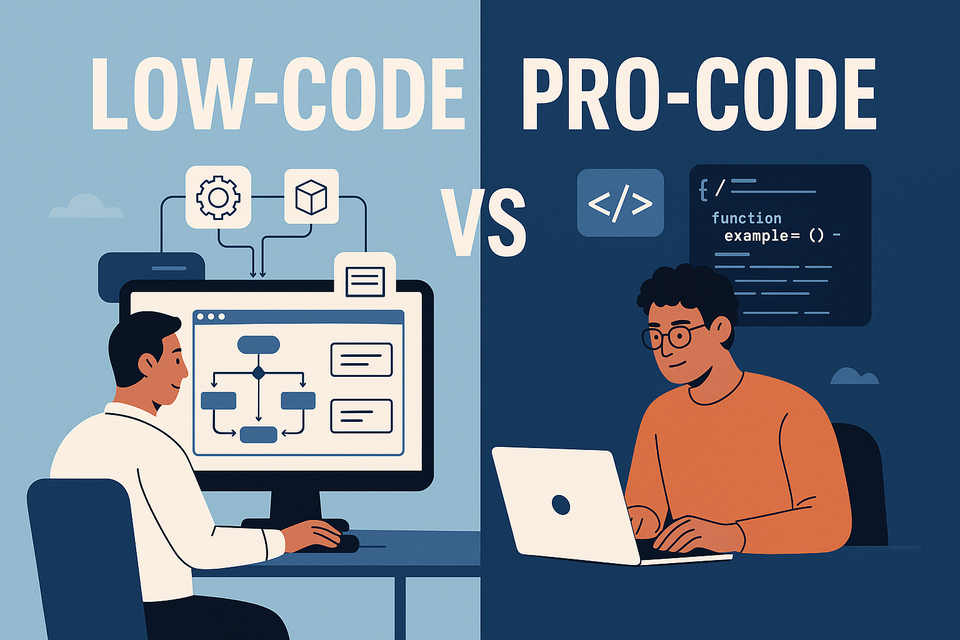Low-Code vs Pro-Code: Why I Stopped Picking Sides

For years, I was a bit of a snob about low-code and no-code tools. If it didn’t involve writing real, robust, and well-documented code, it felt like cheating. Or worse — something destined to break the second it hit production.
But here’s the thing: life comes at you fast. And the busier I got, the more these tools started to make a whole lot of sense.
Low-Code Converts You One Workflow at a Time
It’s not that I suddenly think low-code is the perfect solution for every project, it’s not. But when you’re trying to get from “idea” to “working prototype” in the same afternoon — without sacrificing your entire weekend — low-code is a damn gift.
Enter: Boomi
One tool I’ve gotten pretty comfortable with in my professional life is Boomi. If you’re not familiar, Boomi is an integration platform that handles ETL (Extract, Transform, Load) processes, API management, and more — all with a heavy lean toward drag-and-drop and configuration over code.
What I like about Boomi:
- Quick setup for data mappings and transforms.
- You can still write custom scripts when the built-in stuff isn’t enough.
- It even lets you host and manage APIs directly inside the platform.
- In some cases, Boomi can be your APIM, which is surprisingly handy.
What I don’t like? Well, Boomi’s got quirks for days — but that’s a rant for another article.

Automate Your Day with Apple Shortcuts
Personally, my favorite low-code playground is Apple Shortcuts. If you’ve got a Mac, iPhone, or iPad, you already have access to this, and if you’re on Android, Google has Routines and Tasker.
Shortcuts is weirdly powerful if you take the time to mess with it. I’ve built some routines that save me a ridiculous amount of time, like:
- A “Leave the House” shortcut that turns off my smart lights, checks the weather, and pulls up my calendar.
- Push a notification when I get the to store, and open my grocery list when I tap it.
- Add reminder to take out the trash — but only if it’s not going to be too windy overnight.
- Build templates for common notes I take.
The trick is thinking about the things you do all the time and seeing if Shortcuts can automate even part of it. The less friction, the better.
Other Tools Worth a Look
This list isn’t exhaustive (and I’m sure some no-code evangelist will flood the comments with their favorites), but here are a few others I’ve either used or keep hearing about:
Zapier — Gluing together all the SaaS you forgot you subscribed to.
Power Automate — Like Shortcuts, but for enterprise life (aka SharePoint purgatory).
Airtable — Spreadsheets, but cute and dangerously powerful.
Make — Zapier on steroids if you want to chain together more complex flows.
Final Thoughts: It’s a Toolbox, Not a Religion
Look, I’m never going to be a full no-code convert. But I’ve finally stopped treating these tools like they’re poison. Sometimes you need a scalpel, sometimes you need a chainsaw, and sometimes you just need a big roll of duct tape and bubble gum.
Low-code used to feel like duct tape, and lately, I’m realizing that’s not a bad thing. Sometimes timelines are tight. I’ve come to learn that I value my personal time too much to automate personal tasks with code when a Shortcut can do the job.
What about you? Got a favorite shortcut, automation, or low-code trick you swear by? Drop it in the comments — I’m always looking for ideas (and excuses to tinker).